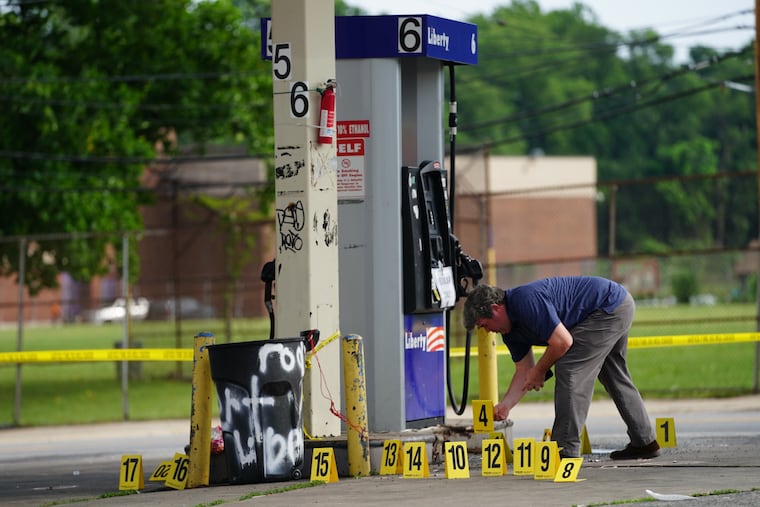A cautionary tale for Philly violence prevention: Evaluating success is only half the job | Opinion
Twenty years ago, Bill Hangley Jr. helped evaluate a violence prevention program. The result got shelved.

With homicides spiking in Philadelphia and nationwide, interest in violence prevention is rising, too. Our latest city budget commits millions to the cause, but the question remains: What actually works? As Temple University’s Jerry Ratcliffe puts it: “Without incorporating a thorough evaluation, we may never learn which programs contribute to the city’s violence prevention, and which do not.” Such evaluations are never easy. Data can only tell us so much about the young Philadelphians who get “caught up” in violence.
But as hard as assessing programs can be, it’s not the hard part. The hard part is changing systems that don’t want to change.
I’ve tried. It didn’t work out. Consider this a cautionary tale.
Twenty years ago, I was part of a team evaluating what we hoped would be a groundbreaking program, Philadelphia’s Youth Violence Reduction Partnership (YVRP). Launched in 1999, the basic idea was to support young offenders with outreach workers, police, and — critically — their probation or parole officers. We had partners: City Hall, police, probation and parole, community groups. We had ample funding from the William Penn Foundation.
And we had data — comprehensive homicide data, straight from the Philadelphia Police Department. Working for a now-defunct nonprofit, Public/Private Ventures, our team set out to find out as much as possible about who kills or gets killed in Philadelphia, in order to guide the YVRP partners’ efforts.
» READ MORE: Is probation the key to gun violence prevention? Not the way Philly is trying. | Editorial
In 2001 we completed an analysis calling for significant changes to Philadelphia’s criminal justice system.
Titled “Murder is No Mystery,” our 40-page report confirmed what too many Philadelphians already know: Many, if not most, homicides involve people who are already “in the system.” In North Philadelphia’s 25th Police District, over half of all alleged killers fit that description. Twenty-five percent were on probation or parole. Another 29% were awaiting trial or sentencing. In those numbers, we saw an opportunity that demanded action.
”Between 1996 and 1999, it is possible that hundreds of people died at the hands of someone who was already in the hands of the criminal justice system,” we wrote. “This is … an obvious indication that probation has failed.”
We knew this would be controversial, but thought Philly’s top cop was on our side. In his introduction to our report, then-Police Commissioner John Timoney called our probation/parole findings a “shocking indictment of our criminal justice system.” Improving those systems offered “the most immediate opportunity to reduce homicides in our city,” the commissioner wrote.
We thought that gave our challenge a chance. We were wrong. In the weeks before “Murder is No Mystery” was slated to be released, I learned from colleagues that it had infuriated law enforcement insiders, and was to be buried instead — quietly, but thoroughly. A few copies trickled out, and it turns up in the occasional footnote or article. But you won’t find links to its data or our conclusions. It became a ghost report.
And alongside “Murder is No Mystery,” our effort to challenge probation and parole practices was buried, too. YVRP survived, but asked less and less of its partners, and became less and less effective. Finally, last year, the Kenney administration put it out of its misery: a friendless, forgotten acronym. Its cheaper, simpler replacement — the “Violence Prevention Project” (VPP) — falls well short of YVRP’s comprehensive vision.
So, to sum up: For 20 years, the City of Philadelphia had a collaborative, interagency violence reduction strategy in place. But it ran aground early when it challenged insiders to change their ways, and never really got off the rocks until it finally broke up and washed away. Before writing this, I contacted former colleagues numerous times to get the full story of how our work was buried. They never returned my calls. And I’m still not sure if it’s a good idea to ask probation and parole departments to help reduce violence.
» READ MORE: Adding millions to violence prevention efforts is a waste without evaluation | Opinion
But the concept deserved a public debate. During its first six years, Philadelphia officials have said, fewer than 2% of all YVRP’s young charges were murdered or arrested for a killing. A 2012 evaluation found that YVRP seemed to help young offenders: “While 5 of every 20 comparison youth were arrested for a violent crime, only about 3 of every 20 YVRP youth partners were — a difference of almost 40%,” the authors found.
So by all means, let’s evaluate all these efforts: for impact, for cost-benefit, and most importantly, for human experience.
But let’s not forget that evaluation is the easy part. Even as I write this, the same police department that so heedlessly gassed Philadelphia protesters last summer is getting a budget increase. Yes, evaluate. But then be ready to fight.
Bill Hangley Jr. is a freelance journalist and editor based in Philadelphia. @HangleyJr